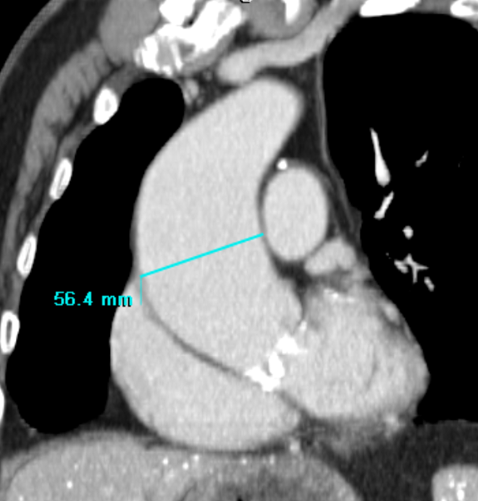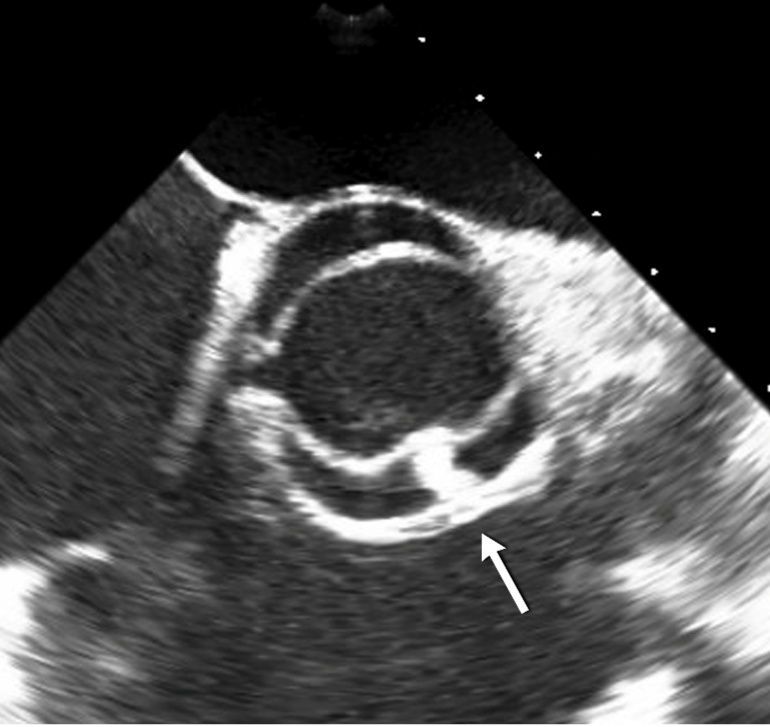Alan C. Braverman, MD
Alumni Endowed Professor in Cardiovascular Diseases
Washington University in St. Louis School of Medicine
The bicuspid aortic valve is the most common congenital valve heart condition affecting approximately 1% of the population being more common in males than females by 2-1 to 3-1 ratio. A bicuspid aortic valve develops when 2 of the aortic valve leaflets fuse during fetal development and a 2 leaflet valve is present instead of the normal 3 leaflet aortic valve. The bicuspid valve may occur sporadically as an isolated congenital heart defect or may accompany other more complex congenital cardiovascular defects in conditions, including coarctation of the aorta (a narrowing of the descending aorta) and Turner syndrome.
It is important to recognize a bicuspid aortic valve as this valve lesion may lead to progressive aortic valve narrowing or stenosis or may result in regurgitation or leaking of the aortic valve. Additionally, the bicuspid aortic valve is a risk factor for an infection of the heart valve called infective endocarditis. These conditions may require valve replacement or repair. The majority of individuals who have a bicuspid aortic valve will require aortic valve surgery during their lifetime.
It is well recognized that a bicuspid aortic valve is a common associated with thoracic aortic disease. In addition to coarctation of the aorta, the bicuspid aortic valve is often associated with enlargement of the ascending aorta and or aortic root. There are different theories for why there is aortic enlargement or dilatation, also called “aortopathy” related to bicuspid aortic valve disease. The bicuspid aortic valve is associated with abnormal flow in the proximal aorta leading to increased wall shear stress that leads to degeneration of the aortic wall elastic tissue and progressive aortic enlargement over a lifetime. Additionally, the bicuspid aortic valve has a strong genetic component and this can associated with aortopathy. About 9% of individuals with a bicuspid aortic valve well also have a family history of bicuspid valve disease. Therefore, first-degree relatives (children, parents, siblings (if appropriate) of the individual with bicuspid aortic valve should have an echocardiogram to determine whether a bicuspid valve is present in a relative. The bicuspid aortic valve is more common in individuals with certain heritable thoracic aortic disease including Loeys-Dietz syndrome. In Loeys-Dietz syndrome, about 10% of individuals have bicuspid aortic valve.
Individuals with a bicuspid aortic valve should undergo serial evaluation of the valve and aorta with echocardiograms and if the full extent of aortic enlargement is not well characterized, then cross-sectional imaging with a CT scan or MRA is indicated to evaluate for aortic enlargement. Individuals with a bicuspid valve and no significant aortic enlargement have a very low risk of aortic dissection. However, if significant aortic enlargement occurs, the individual with a bicuspid aortic valve is at risk for ascending aortic dissection. Surgical resection of an aneurysm involving the ascending aorta and/or aortic root is indicated when the aortic diameter reaches a certain size threshold, generally between 5.0 and 5.5 cm for appropriate candidates. If someone with a bicuspid valve requires aortic valve surgery, concomitant aortic aneurysm surgery is performed when the aorta is 4.5 cm or greater in appropriate candidates.
Individuals with a bicuspid aortic valve who have proper evaluation and management can expect to live a lifespan similar to the general population. There are some restrictions on intense physical activity and exercise for individuals with significant bicuspid valve disease or aortic aneurysm.
Because some individuals with bicuspid valve may have progressive enlargement of the aorta even after valve surgery, long-term monitoring of the aorta is required after valve replacement.

From: Braverman AC, Cheng A. The Bicuspid Aortic Valve and Associated Aortic Disease. In Valvular Heart Disease, 5th Edition. Otto CM, Bonow RO, eds. A companion to Braunwald’s Heart Disease. Saunders/Elsevier, Philadelphia, 2020

From: Braverman AC, Cheng A. The Bicuspid Aortic Valve and Associated Aortic Disease. In Valvular Heart Disease, 5th Edition. Otto CM, Bonow RO, eds. A companion to Braunwald’s Heart Disease. Saunders/Elsevier, Philadelphia, 2020

